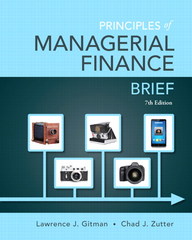Question
4. Firm A (the acquiring firm) is in the similar business as Firm T (the acquired or target firm) and is considering acquiring Firm T.
4. Firm A (the acquiring firm) is in the similar business as Firm T (the acquired or target firm) and is considering acquiring Firm T. Firm A expects to generate annual before-tax cost savings from the acquisition of $100 million by the end of year 5. The cost savings benefit would be $40 million in year 2, increase by $20 million per year until it reaches $100 million in year 5, and remain at $100 million thereafter. Firm A also expects that, following the merger, it would incur before-tax costs associated with integrating the two companies for a total of $150 million over the first three years (i.e., $50 million for each year). Below is the information for Firm T. Year 0 is the year of valuation.
| Firm T ($ millions) | |||||||
| Year 0 | Year 1E | Year 2E | Year 3E | Year 4E | Year 5E | Year 6E | |
| Pre-tax sales | $1,000 | $1,080.0 | $1,166.4 | $1,259.7 | $1,360.5 | $1,469.3 | $1,542.8 |
| Pre-tax operating income | 129.6 | 140.0 | 151.2 | 163.3 | 176.3 | 185.1 | |
| Pre-tax cost savings | 0.0 | 40.0 | 60.0 | 80.0 | 100.0 | 100.0 | |
| Pre-tax cost of integrating businesses | 50.0 | 50.0 | 50.0 | 0.0 | 0.0 | 0.0 | |
| Depreciation expense | 100.0 | 105.0 | 110.0 | 120.0 | 90.0 | 0.0 | |
| Capital expenditures | 120.0 | 125.0 | 130.0 | 135.0 | 140.0 | 100.0 | |
Firm Ts annual total net working capital is 10 percent of sales for the year. Tax rate is 25%. The firms pre-tax cost of debt is 8 percent per year. The annual risk free rate of return is 5 percent and the annual market rate of return is 12 percent. The company has a debt to equity ratio of 0.60 and a levered equity beta of 1.6. Assume that free cash flows grow at a constant annual growth rate of 5% forever after year 6. Find the value of the firm with synergies based on the free cash flow valuation model.
Notes:
o Sales estimated using 8% growth through year 5 and 5% growth beyond year 5. o Pre-tax operating income estimated as 12% of sales. The pre-tax operating income is the earnings before interest and taxes (EBIT) defined as Sales Fixed costs Variable costs Depreciation expense.
Step by Step Solution
There are 3 Steps involved in it
Step: 1

Get Instant Access to Expert-Tailored Solutions
See step-by-step solutions with expert insights and AI powered tools for academic success
Step: 2

Step: 3

Ace Your Homework with AI
Get the answers you need in no time with our AI-driven, step-by-step assistance
Get Started


